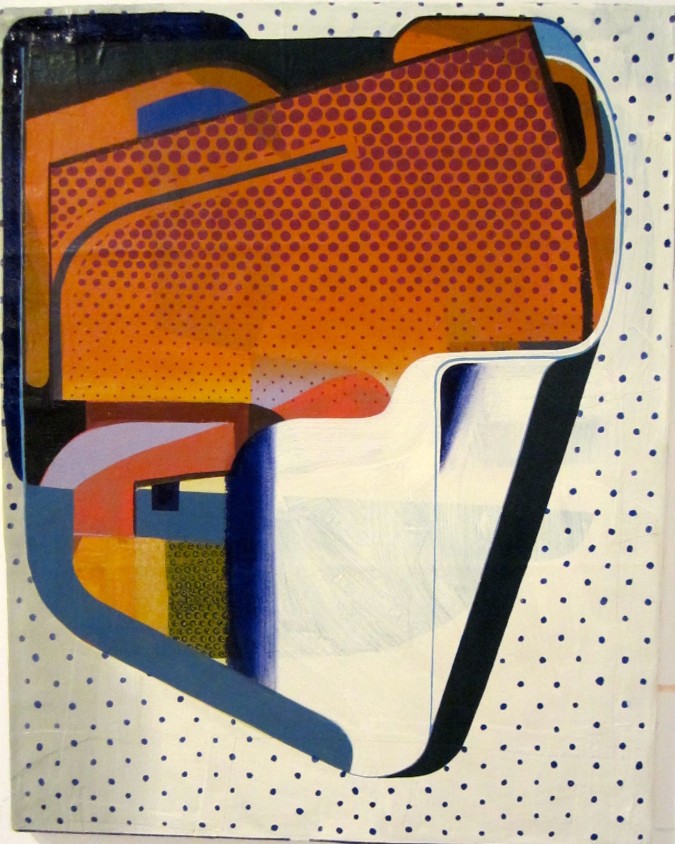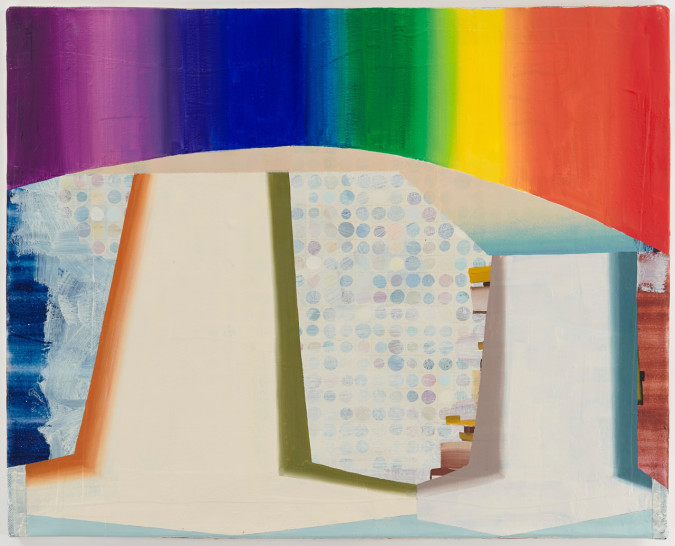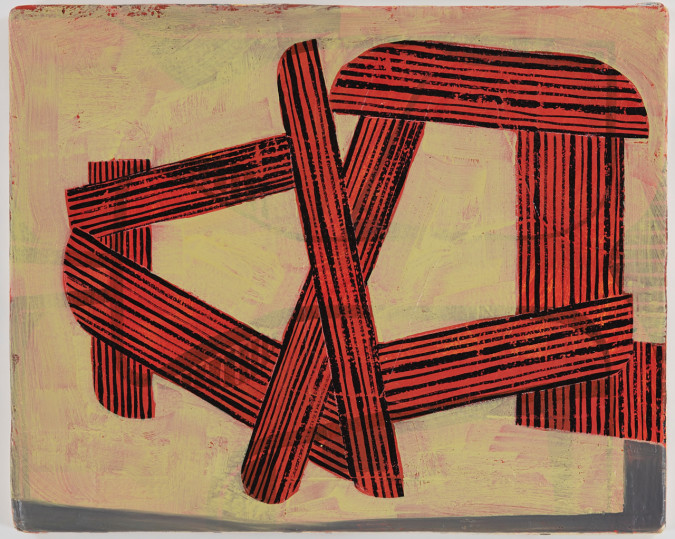Tom Burckhardt
Tom Burckhardt is known for exploring the artistic process and subverting the boundary between representation and abstraction. Noting his avoidance of painting on canvas (preferring to use book-pages and molded plastic) and traditional art materials for his sculptures, critic John Yuan described Burckhardt’s aim as to “destabilize the grand tradition of painting and sculpture while simultaneously finding non-nostalgic ways to honor them.” Burckhardt’s 2011 installation “157 Elements of a Painting” attempted to deconstruct notions of painting with 157 bold, colorful images that contained quasi-recognizable forms with fragmentary motifs and painterly elements. In the same spirit, Full Stop (2005-06), a detailed cardboard-and-black-paint recreation of an artist’s studio—complete with art books on the shelves and a blank canvas—was an attempt to undermine the material aspect of installation art.
Question:
Your paintings celebrate visual pleasure. Images are drawn from a profusion of sources and cultures. They are theatrical…reaching out and playing with the audience while parading around the gallery asking questions without rev
ealing much about their identity. In a recent interview you state “…painting is something that I love, but is ridiculous, anachronistic, and useless. It touches on the tradition of doubt in modern painting—out of New York School painting.” When discussing your work you often use the word perverse. How do you see your paintings and/or process as perverse?
Answer:
I often use the word perverse in relation to the cast plastic grounds that I make to paint on. These are casts of a handmade original that looks messed up and funky, with a surface that looks laid up of fabric or papier mache. I then made a silicon rubber mold and all the supports are cast with a 2-part liquid plastic. after it’s cured I pop it out, sand it, wipe it, prime it and then I can start the painting. How much easier would it be to buy a pre-stretched canvas! Thats why it seems perverse, as in harder than it should be, and individual to me. Only to me would making something so fake end up feeling realer than the real canvas. Ass- backwards, that’s what I mean by perverse. Then when I have what could be called a conceptual package I mess it up again by trying to make an honest painting on top, things that can’t be well reconciled within a proper art strategy.
One Question/One Answer is a series of very, very brief conversations about art and life between Romanov Grave and a variety of extraordinarily interesting artists.








